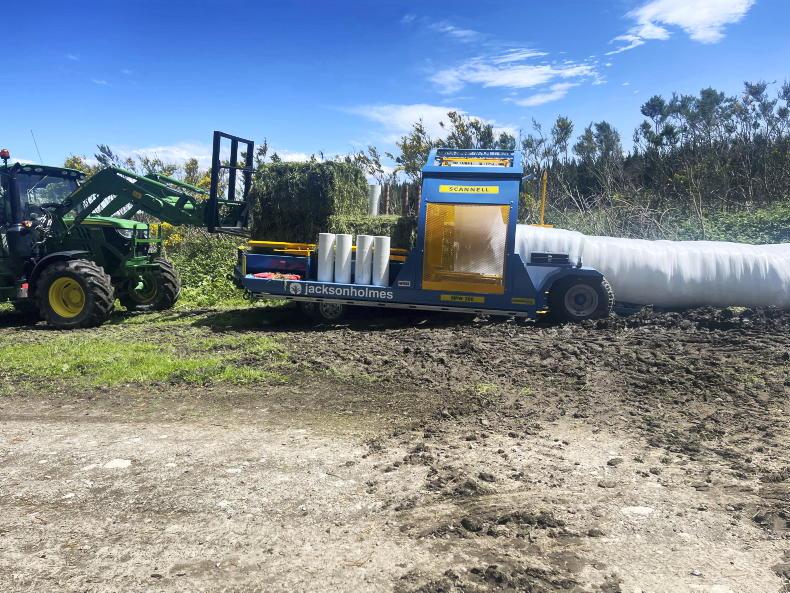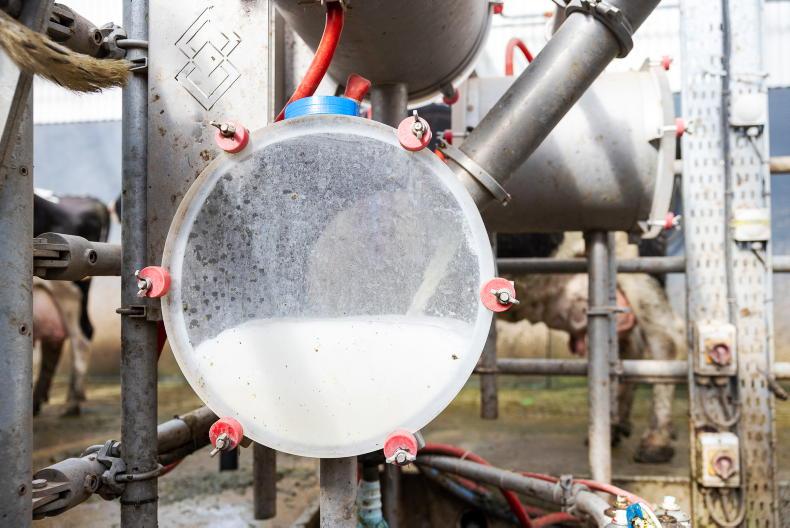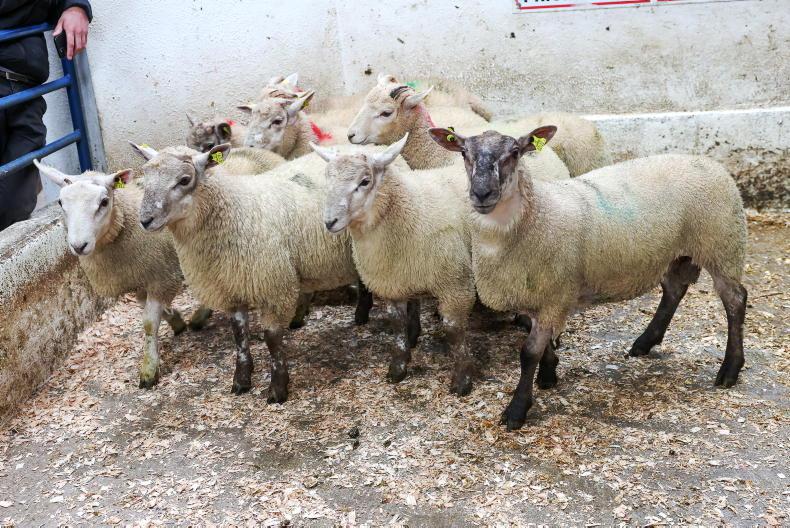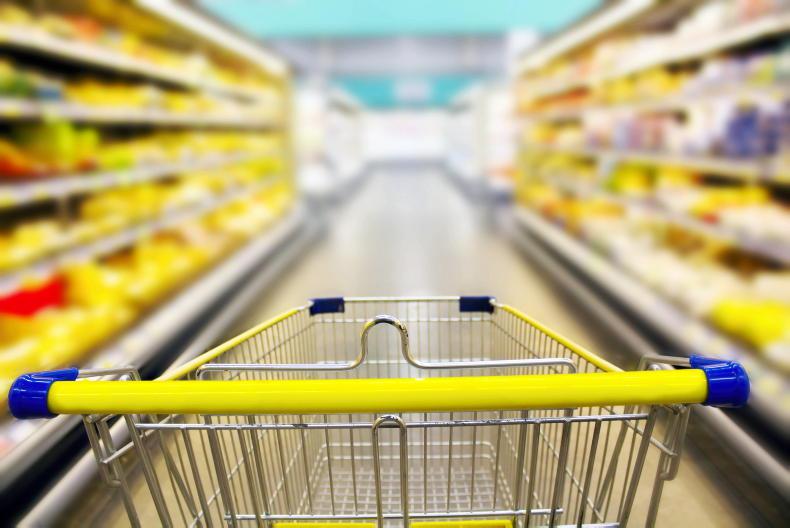Cultivation and drilling have been under way on the farm recently for kale crops that will be used for feeding cows during the dry period next winter.
When completing this work, the most significant difference from home hasn’t been the 380hp tractor on the drill or the hectare packs of grass seed that make the acre packs at home look like they’re meant for the garden. Instead, it’s the use of a helicopter for jobs like spraying out paddocks and applying fertiliser. It is something I never thought I’d see.
The pilot, Scott, makes a variety of low passes and sharp turns over the paddock to be sprayed out, with movements made just a few metres above the treeline, while lining up for the next pass. This was done primarily due to the land being further into the foothills and a challenge to spray using more conventional methods.
AI straws
Breeding is well under way with the use of dairy straws ending this week, and moving to beef AI, which will primarily comprise Hereford sires.
Short-gestation beef bulls will be used after week eight, with the aim to pull those cows back by a couple of weeks. A six-week scan will also be done for the herd for the first time this year, which will hopefully reduce the empty rate by finding and treating cows with any problems at this stage.
Between this and having the heat detection collars on cows this year, it will be interesting to see if there is a difference in the empty rate from last year, come the end of breeding.
Needless to say, the benefit of collars is already being felt, with little to no decision-making required when picking cows ready for AI.
The first-cut silage was started this week with several fields harvested into what can only be described as a tube of bales.
The bales were carted back to the farm on rigid lorries – a far cry from a night spent with the bale lifter on the tractor at home.

Bales are wrapped into one continuous length.
They were then wrapped on-site using a wrapper that moves the bales down a conveyor and wraps them in one continuous length.
These can go on for a few hundred metres, with the only constraint being the length of the paddock.
On the milking platform, the grass is growing just above demand, with no surplus baled from the platform to date
In general, the scale of the contracting operations are extensive with tractors upwards of 300hp being used for most cultivation work.
On the milking platform, the grass is growing just above demand, with no surplus baled from the platform to date. Hopefully growth will improve as we are not far off needing to supplement cows.
This is due to a wet and cooler spring, with a variety of late frosts that have reduced soil temperatures.
However, the wet November has required little to no irrigation this month, with the farm receiving 76mm of rain last weekend.
I’m told this is always welcome when heading into the drier months on the farm, and should help reduce any irrigation required before Christmas. On the other hand, a few more dry days would help staff morale and mean we could swap the waterproofs for shorts.
Read more
Ready for breeding season in New Zealand
Young Stock Podcast: Down farmer heading for NZ
Cultivation and drilling have been under way on the farm recently for kale crops that will be used for feeding cows during the dry period next winter.
When completing this work, the most significant difference from home hasn’t been the 380hp tractor on the drill or the hectare packs of grass seed that make the acre packs at home look like they’re meant for the garden. Instead, it’s the use of a helicopter for jobs like spraying out paddocks and applying fertiliser. It is something I never thought I’d see.
The pilot, Scott, makes a variety of low passes and sharp turns over the paddock to be sprayed out, with movements made just a few metres above the treeline, while lining up for the next pass. This was done primarily due to the land being further into the foothills and a challenge to spray using more conventional methods.
AI straws
Breeding is well under way with the use of dairy straws ending this week, and moving to beef AI, which will primarily comprise Hereford sires.
Short-gestation beef bulls will be used after week eight, with the aim to pull those cows back by a couple of weeks. A six-week scan will also be done for the herd for the first time this year, which will hopefully reduce the empty rate by finding and treating cows with any problems at this stage.
Between this and having the heat detection collars on cows this year, it will be interesting to see if there is a difference in the empty rate from last year, come the end of breeding.
Needless to say, the benefit of collars is already being felt, with little to no decision-making required when picking cows ready for AI.
The first-cut silage was started this week with several fields harvested into what can only be described as a tube of bales.
The bales were carted back to the farm on rigid lorries – a far cry from a night spent with the bale lifter on the tractor at home.

Bales are wrapped into one continuous length.
They were then wrapped on-site using a wrapper that moves the bales down a conveyor and wraps them in one continuous length.
These can go on for a few hundred metres, with the only constraint being the length of the paddock.
On the milking platform, the grass is growing just above demand, with no surplus baled from the platform to date
In general, the scale of the contracting operations are extensive with tractors upwards of 300hp being used for most cultivation work.
On the milking platform, the grass is growing just above demand, with no surplus baled from the platform to date. Hopefully growth will improve as we are not far off needing to supplement cows.
This is due to a wet and cooler spring, with a variety of late frosts that have reduced soil temperatures.
However, the wet November has required little to no irrigation this month, with the farm receiving 76mm of rain last weekend.
I’m told this is always welcome when heading into the drier months on the farm, and should help reduce any irrigation required before Christmas. On the other hand, a few more dry days would help staff morale and mean we could swap the waterproofs for shorts.
Read more
Ready for breeding season in New Zealand
Young Stock Podcast: Down farmer heading for NZ










SHARING OPTIONS